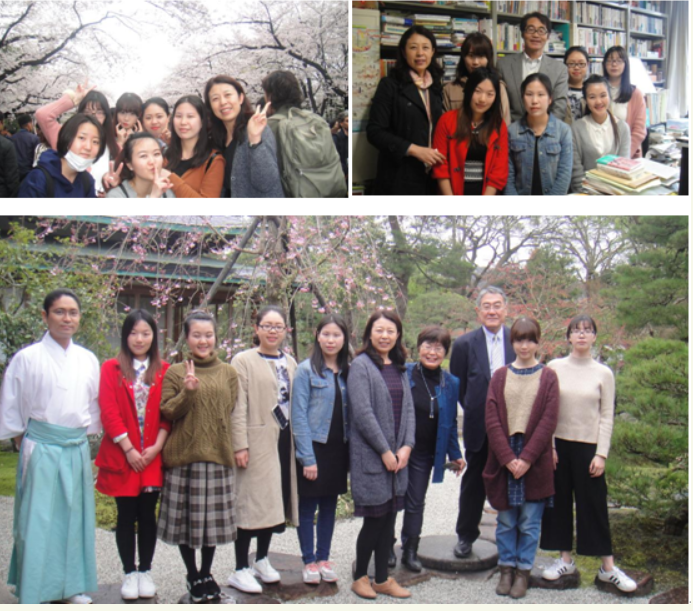|
From 2 to 8 April 2016, our office administrator Madam Xue Xiaomei led six students of IEAS and School of Oriental Language and Culture for a cultural enrichment trip to Japan under the sponsorship of Umeda Yoshimi Foundation for Japanese Cultural Studies. They visited Ms Setsuko Umeda , Tokyo, Kanagawa, Kamakura, Shizuoka, Osaka, Kyoto, Nagoya, Ueno Park, Asakusa Temple, Akihabara, Kanagawa University, Chidorigafuchi, Tsurugaoka Hachiman-gu, Kamakura Buddha, Enoshima, Atami, Kinkakuji Temple (Golden Pavilion), Kiyomizu Temple, Kamakura High School, Mr Kenji Kato of Tsurugaoka Hachiman-gu, Professor Ma Xingguo and Professor Makoto Oguma of Kanagawa University.
Our students embarked at Chubu Region (literally ŌĆ£central partŌĆØ) to Kansai (literally ŌĆ£west of the borderŌĆØ) and Kanto ( literally ŌĆ£east of the borderŌĆØ) where is JapanŌĆÖs largest plain. Springtime in Japan is magical. JapanŌĆÖs iconic sakura (cherry blossoms) capture the attention of our students for hanami (cherry blossom viewing) by their beautiful pink flowers in soft, romantic and colorful splendor.
Kansai Region (literally ŌĆ£west of the borderŌĆØ), commonly known as the Kinki Region, used to be political and cultural heart of Japan for a few centuries. Historic Kyoto had been JapanŌĆÖs capital and emperorŌĆÖs residence from 794 to 1868. It is one of the small number of cities where is spared the devastation of WWII. IEAS students explored its fine old streets and architecture. Tokyo is in Kanto Region and the worldŌĆÖs most populous metropolis. Kanagawa Prefecture is at the southwest of Tokyo with Yokohama as its prefectural capital and home to Kamakura and Hakone.
When students met Ms Setsuko Umeda, they gave a face-to-face appreciations of her sponsorship for their trip. In Tsurugaoka Hachiman-gu, which is the most famous Shinto shrine in Kamakura, Kanagawa Prefecture, Mr Makoto Oguma kindly explained the gist of Shinto to students that kami is the Japanese noun for Shinto deities while Shinto is a religious term for the faith which reverse all the kami of heaven and earth. There is neither original sin (tsumi) nor impurity (kegare). All unfortunate events are caused by exteriors.
To IEAS students, the cleanliness and order of Japan are overwhelming positive. All of them have most wonderful cultural experience in Japan. All in all, peace, mutual cultural understanding and harmony should be valued above all else. In their plane back to Shanghai via Nagoya, they looked out of the window and rewarded Japan with brightest smiles which were identical to the unforgettable warm bright smile of Ms Setsuko Umeda.

|
